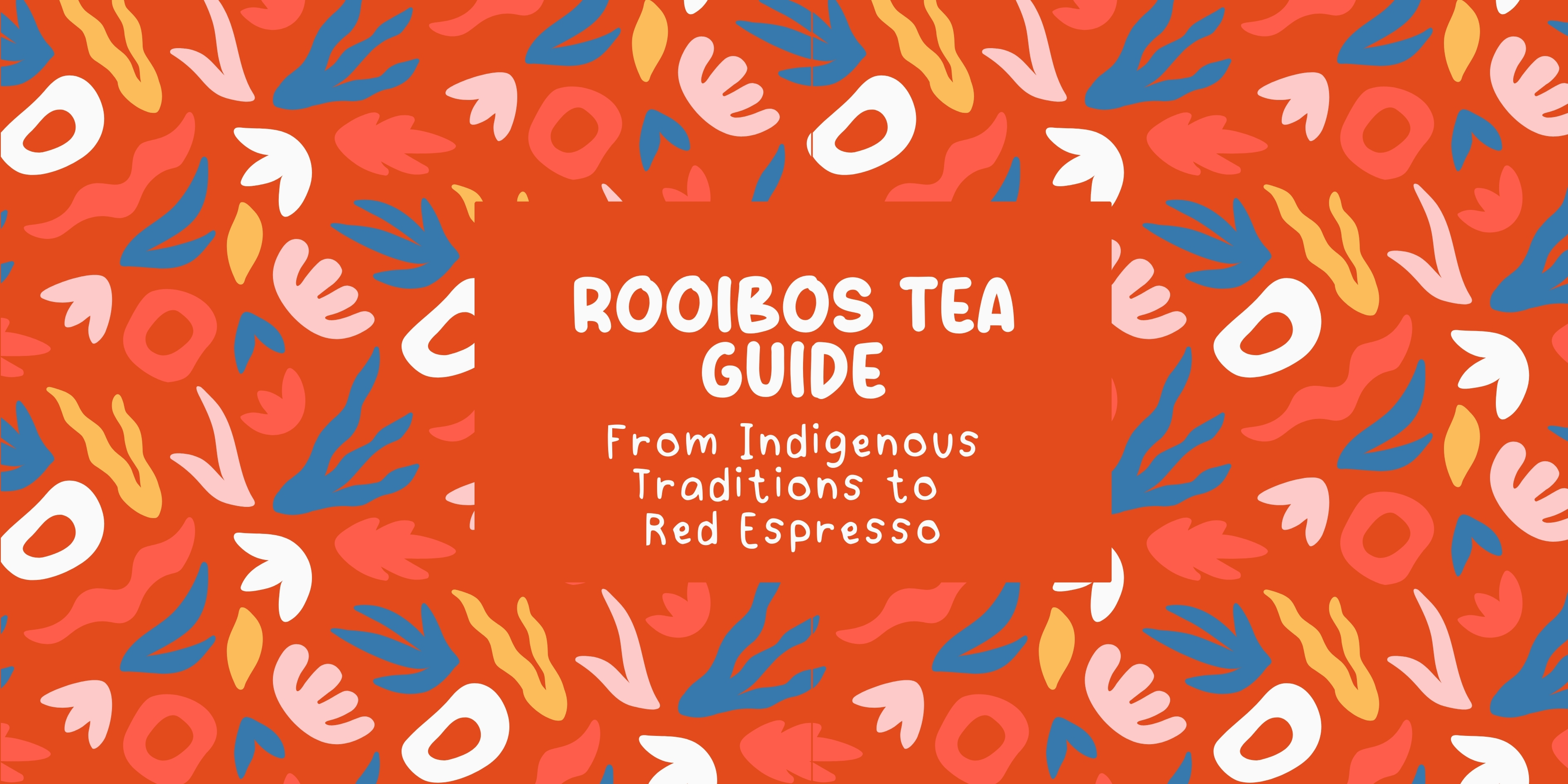
Rooibos Tea Guide: From Indigenous Traditions to Red Espresso®
Rooibos tea is one of South Africa’s most distinctive exports. Grown only in the Cederberg mountains of the Western Cape, it has become known internationally for its smooth taste, natural health properties, and cultural significance. Unlike black or green tea, rooibos is naturally caffeine-free and low in tannins, which gives it a mild, slightly sweet flavour without bitterness.
What is Rooibos Tea?
The word “rooibos” means red bush in Afrikaans, referring to the plant Aspalathus linearis.
The leaves are harvested, oxidised, and dried to produce the reddish-brown infusion we know today. Because it thrives only in a small region of South Africa, rooibos is a unique and protected crop — part of the country’s agricultural identity. Although these days it is commercially cultivated, plant has not been truly domesticated.
A Brief History and Cultural Role
The first recorded use of rooibos was by the Khoi and San people, who brewed it for both medicinal and everyday purposes. By the 1700s, European settlers in the Cape adopted rooibos as a local alternative to imported black tea.
In 1772, the Swedish botanist Carl Thunberg recorded how wild rooibos plants, growing high in the Cederberg mountains, were harvested and used by local communities. His account helped spark wider interest in rooibos. At that time, the Khoisan people brewed rooibos leaves into a herbal tea, though it was very different from the rooibos tea we know today.
The development of rooibos as a refined product came through a meeting of knowledge systems. Indigenous communities understood the plant and its uses, while settlers introduced techniques borrowed from Asian tea traditions, such as bruising the leaves and allowing them to oxidise. This exchange of knowledge laid the groundwork for rooibos as a cultivated and processed product. However, it took many years before these practices evolved into the structured industry that now produces rooibos tea on a global scale.
Over the decades, rooibos moved from a rural household staple to a nationally recognised beverage. In South African homes, it has long been a tea offered to children, families, and guests — a reflection of everyday life rather than luxury. Today, rooibos is an important agricultural export and a symbol of local heritage that has found a place on menus worldwide.
Health Benefits of Rooibos Tea
Research has confirmed several wellness properties that make rooibos more than just a pleasant drink:
- Antioxidant content: Rooibos contains aspalathin and quercetin, compounds linked to reducing oxidative stress.
- Cardiovascular support: Some studies suggest rooibos can help regulate blood pressure and cholesterol.
- Iron absorption: Its naturally low tannin levels mean it does not inhibit iron uptake, unlike many other teas.
- Caffeine-free hydration: Suitable for children, pregnant women, and those avoiding stimulants.
- Skin and allergy relief: Traditionally used to ease skin irritations and hay fever symptoms.
How to Drink Rooibos Tea
Rooibos is adaptable and can be prepared in different ways depending on preference:
- Standard brew: Steep for 5–7 minutes. Drink plain, with lemon, or lightly sweetened.
- With milk: Popular in South Africa, served similarly to black tea.
- Iced tea: Brewed strong and cooled, often with fruit or herbs.
- Lattes and cappuccinos: Rooibos works well with frothed milk for a café-style option.
- Culinary uses: Rooibos can also be used as a flavour base in baking, marinades, or syrups.
Red Espresso®: Rooibos in a New Format
For those who enjoy café culture but prefer to avoid caffeine, red espresso® offers rooibos in a fresh way. It is made from finely ground premium rooibos, designed to be brewed in an espresso machine. The result is a concentrated shot with a rich crema, served in formats usually associated with coffee:
- Red cappuccino
- Red latte
- Iced rooibos flat white
This innovation has made rooibos a fixture in coffee shops across South Africa and beyond, showing how a traditional product can be reinterpreted without losing its roots.

Rooibos as Heritage
More than just a health drink, rooibos represents a link between South Africa’s indigenous knowledge, colonial history, and modern identity. It is an everyday beverage with global reach, yet it remains tied to its origins in the Cederberg. Drinking rooibos, whether as a simple cup at home or as a crafted red espresso latte, is a reminder of the way culture, land, and tradition shape what we consume.
Plus, it's delish.
✨ Sources:
Other posts we think you'd like
DIVE INTO MY LATEST YOUTUBE SERIES AND GUIDES
Join me as I uncover the magic of Cape town, one suburb at a time, through our binge-worthy YouTube series. Each episode offers a unique glimpse into the vibrant culture of the city, suburb by suburb. You can now download my guide to follow along and visit each spot!
Must-see YT Series
Watch, learn, and get inspired for your next adventure!
Go-To CPT Beginners Guide
Download me FREE beginner’s guide to Cape Town today!
.png)


